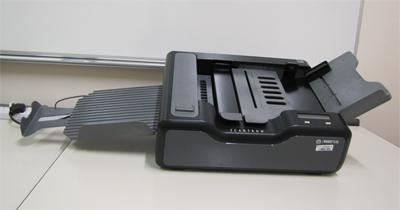Optical mark recognition (OMR) has been used for decades to score multiple choice exams and assessments. OMR works by detecting marks made in predefined places on a document, allowing for quick and accurate grading. With the rise of online evaluations, integrating OMR technology can bring several key benefits.
What is an optical mark reader in computer-based assessment?
An optical mark reader in the computer is a specialised scanner that detects pencil or ink marks in predefined positions on exam papers or assessment sheets. It works by shining lights onto the sheet and detecting reflections. This allows it to “see” where marks have been made, like filled-in bubbles or boxes. The optical mark reader in the computer then determines which answers were selected and scores the assessment.
Benefits of integrating OMRs
There are several major advantages to integrating optical mark readers in computer-based online assessment platforms:
Accuracy and objectivity
One of the most significant benefits optical mark readers in computers provide is extremely accurate grading that is free from human subjectivity and bias. Optical mark reader in computer scanning ensures consistency in scoring examinations. This increases fairness and confidence in the assessment results.
Faster scoring
Online exams scored by an optical mark reader on the computer can be graded almost instantly. This allows tests and assessments to be scored in real-time, providing rapid feedback to the examinee. For large-scale exams that would take days or weeks to score by hand, OMR scanning speeds up the entire process.
Lower costs
Once the infrastructure for OMR is set up, the operating costs per exam scanned are extremely low. This can save significant time and money compared to human scoring, especially for organisations that conduct a lot of standardized tests or employ large-scale surveying.
Flexibility
A well-designed optical mark reader in computer software can scan and score a wide range of assessment formats and layouts. Many modern OMR engines use advanced image processing and machine learning to recognise different testing designs and scan sheets. This provides flexibility for question styles.
Challenges of adopting OMRs
However, there are also some difficulties that come with trying to integrate optical mark readers in online assessments:
Requires specialized documents
OMR systems rely on specially designed documents with bubbles or boxes to mark answers in specific places. Creating and printing these scan forms raises costs compared to just computer-based text entry for assessments.
No capture of work
One downside of optical mark readers in computers is that they only grade the final filled-in answers. They cannot capture calculations, work, or explanations like human scoring can. Certain subject areas may still require some open-ended items or supplemental grading.
Technology barriers
To scan forms, an optical mark reader in computer hardware, custom software, and integration with online platforms is required. For some institutions, these technology investments and change management requirements act as barriers to adopting OMR tech.
Maximizing benefits of OMRs in online assessments
Organizations looking to enjoy the advantages of optical mark readers in their computer-based assessments while avoiding the pitfalls should focus on a few key areas:
Careful form design
Well-designed scan sheets are critical for successful OMR implementation. Creating templates that are easy to fill out accurately reduces errors. Consider usability, clarity, and OMR software requirements during design.
Hybrid approach
Using optical mark readers in computer scoring for the bulk of assessment items but supplementing with some hand scoring of open-ended questions allows you to reap automation benefits without losing the ability to capture student work products.
Gradual adoption
Slowly rolling out OMR capabilities over time allows management of costs and change impacts. Focus first on the highest volume exams or assessments providing the most grading burden relief.
Leverage OMR software capabilities
The right OMR software makes integration much easier. Seek a solution that offers tight integration with major online proctoring, testing, and grading platforms. Automated upload and scoring data exchange is hugely beneficial.
Conclusion
The accuracy, speed, and cost savings of optical mark reader in computer scoring deliver major advantages to organizations conducting large volumes of multiple-choice tests and assessments. Integrating OMR capabilities into existing online proctoring and learning management systems can be done gradually to control costs and changes. With the right strategies, documents, and software, OMR adoption can significantly benefit computer-based assessment programs.



